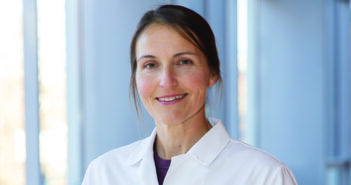Lack of public health funding and prenatal care access are exacerbating a congenital syphilis crisis.
As syphilis rates among adults have soared to epidemic proportions, so too have its rates among newborns.
In an effort to clamp down on the potentially harmful and even deadly sexually transmitted infection over the past two decades, the CDC focused its screening recommendations on men who have sex with men, among whom syphilis was spreading most rapidly. Additionally, in June, the agency finalized guidelines to provide postexposure doxycycline—known as doxy PEP—to prevent infection in that population.
However, says Associate Professor of Medicine Philip Chan, MD, MS, “there’s no data yet for doxy PEP in cisgender, heterosexual women or men.”
Yet maternal syphilis is rising precipitously in the US—and along with it, congenital syphilis. In 2022, the CDC reported that 3,761 infants in the US were born with the disease, which can cause stillbirth, miscarriage, low birth weight, and many severe health problems. While the CDC recommends that all pregnant people be tested for syphilis in the first trimester, “a significant number of women have inadequate or late prenatal care,” says Chan, a consultant medical director for the Rhode Island Department of Health.
“For a long time, we’d had no cases of congenital syphilis” in Rhode Island, says Erica Hardy, MD, MMSc, an assistant professor of medicine and of obstetrics and gynecology. In 2022, there were five—which seems low, but measured against the number of live births that year, it’s the highest rate in New England.
That said, it’s less than half the reported rate nationwide, which is 102.5 per 100,000 live births, according to the CDC. There are also significant racial disparities across the US: compared to white mothers, rates among Black mothers are four times as high, while American Indian and Alaska Native rates are 12 times higher.
“Not everyone has an equal chance to be healthy and have access to health care,” says Hardy, the director of the Division of Infectious Disease at Women & Infants Hospital. “Some of the same things that are making it hard to access prenatal care are also making it hard to get diagnosed and treated for syphilis.”
In areas with a relatively high prevalence of syphilis, including Rhode Island, pregnant people are supposed to be tested in the third trimester as well as the first, and again at delivery, Hardy says. At that time the newborn is also tested, evaluated, and, if necessary, treated. Penicillin cures most syphilis infections, and quite easily if caught early.
But catching it can be tricky. Syphilis, in its early stages, may be asymptomatic or cause an ulcer that may be small and missed, or goes away before the person gets too worried. Even the blood testing for syphilis is “a little challenging to interpret,” Hardy says. That’s why providers should test and take a detailed sexual history for every pregnant patient. And syphilis should be “on the radar” not just of ob/gyn and infectious disease doctors, she adds, but primary care, emergency medicine, and urgent care physicians as well.
The biggest hurdle for STI prevention generally is inadequate public health funding. “We know how to treat these diseases, we know how to control them, but it does take some awareness and effort and resources,” Hardy says. “We need to really prioritize public health.”
But she sees a silver lining for her small state: “Women & Infants does 85 percent of the deliveries [in Rhode Island], so if we make … sure to remind folks about their trimester testing, that makes a big effect statewide.”




